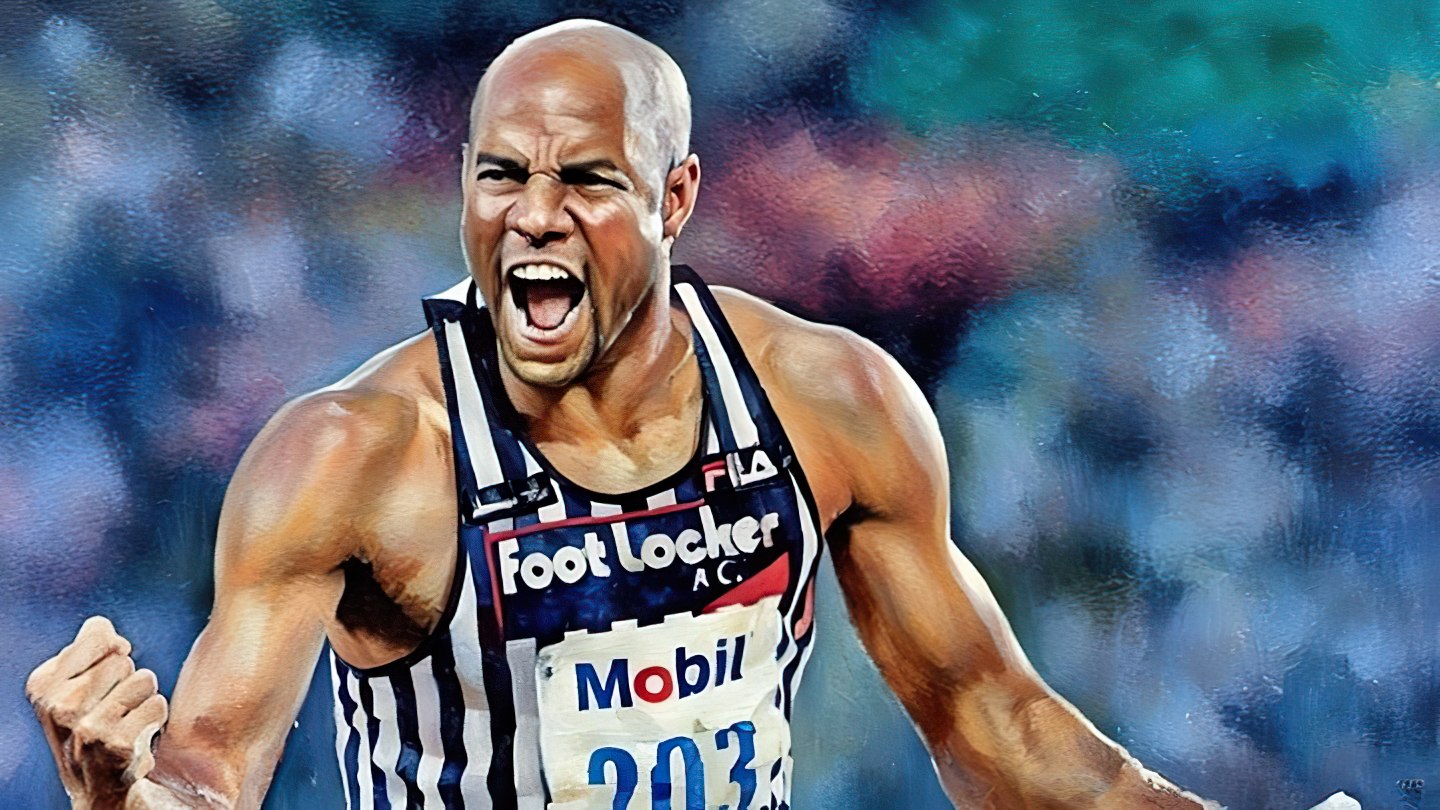Unleashing Raw Power: The Foundation of Sprinting Strength
When it comes to sprinting, speed is only one component of success. Behind every explosive start, powerful stride, and lightning-fast finish is a foundation of strength and conditioning. Sprinters need more than just speed—they need raw power, strength, and endurance to propel them toward their personal best. Whether you’re an elite sprinter or just getting started, strength and conditioning workouts tailored to sprinting are essential for maximizing your performance.
In this article, we’ll dive into the best strength and conditioning workouts specifically designed to enhance your sprinting capabilities. We’ll explore how building strength and power in the right muscle groups, improving your agility, and conditioning your body for explosive movements can transform you into a sprinter capable of reaching new heights. Get ready to step up your training and unlock the full potential of your sprinting abilities.
Understanding Sprinting Strength: Why It Matters
Sprinting isn’t just about running fast; it’s about generating as much force as possible with each stride. The muscles you engage while sprinting—particularly your legs, core, and upper body—must be able to work at full capacity to produce maximum speed. Strong legs drive your movement forward, while a powerful core stabilizes your body and maintains efficient posture. A strong upper body provides balance and assists in coordinating arm-leg movement.
Incorporating strength training into your routine isn’t just about increasing muscle size; it’s about enhancing your ability to explode off the blocks, maintain form under fatigue, and recover quickly. Strength training builds muscle fibers that are crucial for sprinting—specifically fast-twitch fibers that generate quick bursts of power. The goal is to train your body to move with precision, force, and efficiency, all of which contribute to faster sprints.
Power Through Your Legs: Key Exercises for Sprinting
One of the most important aspects of sprinting is leg strength. The power generated in the lower body is what allows sprinters to accelerate quickly, maintain top speed, and drive through each stride. Building leg strength is key for improving acceleration, stride length, and overall sprinting speed.
The foundational exercises for sprinter’s legs include squats, lunges, and deadlifts. Squats, whether performed with body weight or added resistance, target the quads, hamstrings, and glutes—key muscle groups for sprinting power. The deep squat, in particular, helps develop explosive strength, which is essential for the quick start needed in sprints.
Deadlifts are another essential exercise for sprinters. The movement strengthens the posterior chain—hamstrings, glutes, and lower back—critical muscles for powering through each sprint stride. The deadlift also teaches you how to maintain proper posture, preventing fatigue-related form breakdowns during a race.
Lunges, both forward and reverse, help to improve balance, coordination, and strength in the hips and legs. These exercises challenge each leg individually, ensuring that you develop strength and mobility in both sides of your body.
Additionally, plyometric exercises like box jumps, broad jumps, and bounding mimic the explosive movements used in sprinting. These exercises recruit fast-twitch muscle fibers, building strength and power that translate directly to faster starts and better sprint performance.
Core Strength: The Unsung Hero of Sprinting
While leg strength is crucial for sprinting, a powerful core is equally important. A strong core stabilizes your body, helping you maintain optimal posture and efficient running mechanics throughout the race. Your core helps transfer the force generated by your legs into forward motion while keeping your torso aligned and preventing excessive wobble or inefficiency.
Planks, Russian twists, and leg raises are excellent exercises for building core strength. The plank is a fantastic exercise for activating all of the major core muscles. Perform this exercise regularly, gradually increasing the duration as you build endurance. Russian twists work on rotational strength, which is essential for the proper movement of your arms and torso while sprinting.
Leg raises, both hanging and lying, target the lower abs and hip flexors, helping improve your ability to maintain proper posture and drive your legs forward. These muscles are heavily involved in sprinting, and developing strength in them is crucial for quick leg turnover.
For sprinters, it’s also essential to perform exercises that engage the obliques, the muscles on the sides of the abdomen. Side planks and cable rotations build strength in the obliques, enhancing lateral stability and improving the control needed to drive power through the sprint.
Upper Body Power: The Role of Your Arms
The upper body is often overlooked in sprint training, but it plays a crucial role in sprinting performance. The arms help with balance, rhythm, and maintaining posture, especially as the body begins to fatigue. A sprinter’s arms must work in sync with the legs to maintain proper form and propulsion.
Building upper-body strength, especially in the shoulders, back, and arms, is essential. Exercises like push-ups, pull-ups, and bench presses target the chest, shoulders, and triceps, which are important for the arm swing motion during sprinting. Rows, lat pull-downs, and kettlebell swings strengthen the back and shoulder muscles, which help stabilize the upper body and prevent excessive movement while sprinting.
Strong arms can also help drive the legs forward more efficiently, reducing energy wasted on unnecessary movements. Arm mechanics directly impact stride efficiency, so ensuring you have strong, coordinated arm swings will help propel you forward and increase your speed.
Agility Training: Quickness and Precision
Agility is a key component of sprinting, particularly in events like the 200m or 400m where turns and shifts in direction are necessary. Agility training helps improve your ability to change direction quickly without losing speed or momentum. For sprinters, agility drills improve footwork, balance, and reaction time, all of which contribute to a more efficient race performance.
Cone drills, ladder drills, and shuttle runs are excellent ways to improve agility. Cone drills challenge your ability to change direction and maintain control over your movements while keeping your speed high. Ladder drills work on quick foot movement and coordination, improving your foot turnover and reaction time. Shuttle runs, in which you sprint back and forth between two points, simulate the demands of a race, building stamina and speed in the process.
For sprinters, it’s also important to incorporate exercises that improve quickness off the line. Short sprints with explosive starts and quick direction changes enhance acceleration and improve overall race time.
Plyometrics: Explosive Power for Sprinting
Plyometric exercises are integral to building explosive power, which is vital for sprinters who need quick bursts of speed out of the blocks and throughout their race. These exercises recruit fast-twitch muscle fibers, helping sprinters achieve maximum acceleration and top-end speed.
Exercises like box jumps, vertical leaps, and depth jumps improve explosive power by teaching the body to generate force quickly. Box jumps, for example, require the sprinter to jump onto a box or platform from a standing position, mimicking the explosive push-off needed in sprinting. Vertical leaps focus on increasing vertical jump height, which directly contributes to developing the power required to propel the body forward during a sprint.
Depth jumps are a more advanced plyometric exercise in which the sprinter steps off a box and immediately jumps upon landing, forcing the muscles to generate power quickly. These exercises simulate the fast and explosive movements needed for powerful sprints.
Endurance and Conditioning for Sprinters
While sprinting is primarily an anaerobic activity, endurance and conditioning are still essential components of training. Sprinters need the ability to sustain high levels of intensity throughout the race, whether they’re running the 100m or the 400m.
Interval training is one of the best ways to build speed endurance. Sprinting short distances at maximum intensity, followed by brief recovery periods, mimics the demands of a race and builds the cardiovascular system to support sprinting efforts. For example, sprint 150 meters at full intensity, followed by 60 seconds of rest, and repeat the interval for 8-10 sets. Over time, your body will adapt to handle high-intensity efforts for longer periods, improving both endurance and speed.
Additionally, including steady-state cardio, such as cycling or swimming, into your weekly routine can help improve overall cardiovascular health, providing more efficient oxygen delivery to muscles during sprints and reducing fatigue.
The Importance of Recovery
Strength and conditioning workouts are intense, and recovery is just as important as training itself. Overworking muscles without proper rest can lead to injury, burnout, and decreased performance. Recovery allows your muscles to rebuild and grow stronger, ensuring that you’re ready for your next training session.
Make sure to include rest days in your training schedule. Active recovery methods, such as swimming, yoga, or light jogging, help keep the muscles loose and improve circulation, which aids in muscle repair. Foam rolling and stretching after intense workouts help reduce muscle tightness and prevent injury.
Nutrition also plays a vital role in recovery. Consuming a meal rich in protein and carbohydrates within 30 minutes of completing a workout helps repair muscle fibers and replenish glycogen stores, ensuring that your body is ready for the next sprint.
Training Like a Sprinter: The Road to Success
Becoming a world-class sprinter requires dedication, discipline, and the right strength and conditioning program. It’s not just about running fast; it’s about building the strength, power, agility, and endurance that will allow you to perform at your peak. By focusing on building explosive power through targeted leg, core, and upper body exercises, improving agility, and conditioning your body for sustained speed, you’ll be setting yourself up for sprinting success.
The road to becoming a faster, stronger sprinter isn’t easy, but with consistent training, smart recovery, and a well-rounded strength and conditioning routine, you can reach new heights in your sprinting performance. Every training session brings you one step closer to crossing the finish line with your best time yet.
Ignite Your Sprinting Journey: Take the First Step Toward Greatness
Ready to accelerate your sprinting performance? The first step is commitment. With the right strength and conditioning workouts, you can transform your body into a machine built for speed. So, embrace the challenge, push your limits, and get ready to sprint toward greatness. The finish line is within your reach—go for it!




